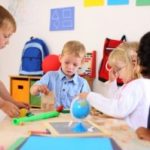Autism is still a horrible medical mystery. While doctors are learning more about the manifestations of the disability, the specific causes remain illusive. Speculation lends to chemical imbalances in the brain, an illness affecting proper brain function, or heredity. Who knows? While scientists search for a cause, specialists are concentrating on the disability and proper treatment options.
Autism is a thief. A healthy, vibrant, outgoing child essential retreats in a private, inaccessible world. Seemingly overnight, a child quits talking and interacting with people and the environment. Open eyes do not see the world in a normal perspective. Communication is usually impossible. A normally compliant and easygoing child may begin expressing needs in non-verbal and aggressive ways. For example, a child wanting a cookie may point to the cupboard and throw a temper tantrum to express his/her desire. Unfortunately, a confused parent/caregiver is required to guess the need or desire before the fit is silenced. Parents of a talking happy child wake to a stranger. The feelings of helplessness, confusion, unfounded guilt, and grief are profound. Nevertheless, despite the obvious devastation of autism, doctors, therapists, and the autistic themselves give reason for hope.
Temple Grandin is an excellent example of hope. Autistic, Dr. Grandin has not only found her way beyond the world of Autism, she has shared her knowledge and experiences as a professor, a talk show guest, an expert in Animal Science, and a woman with a disability. The first positive trait of Dr. Grandin to give parents hope is her intelligence. Not only did Dr. Grandin open a door to the world of Autism, she has a Ph.D., teaches college students, and spends time traveling to various speaking engagements. She definitely gives hope to countless families living with autism.
Another example of hope in autism is “Mary”. “Mary” works in the county library. Although her mother died of cancer many years ago, she has been her daughter’s best therapist. She always believed in her daughter, and her ability to succeed. As a result, “Mary” is an inspiration to the people who know her disability. Why? “Mary” now holds down a full-time job shelving books. Taking the time to listen, people may hear “Mary” fretting over the patron who reads the back of a book and puts it back in the wrong place. She is meticulous and takes her job seriously. She stays to herself the majority of her day, but she can communicate with coworkers, if a need arises. While her current living arrangements remain a mystery to the casual observer, “Mary” can be seen walking to and from work every day. She is always well kept and dressed in stylish age-appropriate attire. She is a symbol of hope for anyone with an autistic loved one.
Unfortunately, hope only goes so far when a child sits silent and unresponsive to the attentions of a loving parent. After a child has been diagnosed with autism, parents need time to grieve. Then, with the help of trained professionals, develop an immediate plan of action against the silent thief of a once interactive and loving child.
The most promising intervention is Applied Behavioral Analysis, or other similar treatments. Intensive therapy requires 20-40 hours per week of intensive therapy. Therapist make simple requests requiring the child to interact. The request is repeated hourly, daily, or weekly until the child responds. Rewarded, the child is approached with a new request, and the process starts all over again. The treatment may seem excessive, but some autistic children have responded positively. Dr. Temple Grandin has also given the public insight into the different styles of learning for autistic individuals. Personally, she sees the world in pictures, so she is a visual learner. Other autistic children may learn by lists or logic. As soon as an autistic child’s interests are known, therapists can determine whether the child is likely to learn visually, logically, or by lists. Autistic children are not necessarily intellectually challenged. Like Dr. Grandin, many autistic children have above average intelligence. So, with early and intensive therapy, learning the type of thinking, and the cooperation of parents, therapists, and educators, autistic children can learn. Thus, painstakingly searching for the key to an autistic’s world increases the possibility of bridging the gap between both worlds.
Biography
No part of this article may be copied or reproduced in any form without the express permission of More4Kids Inc © 2006
Posting Search Tags: Disabilities Autism

Discover Simple Methods To Easily Spot The 31 Signs of Autism & Find Out The Effective Steps That Really Work To Maximize the Potential of Someone Who Has Autism
The Essential Guide to Autism








Add Comment